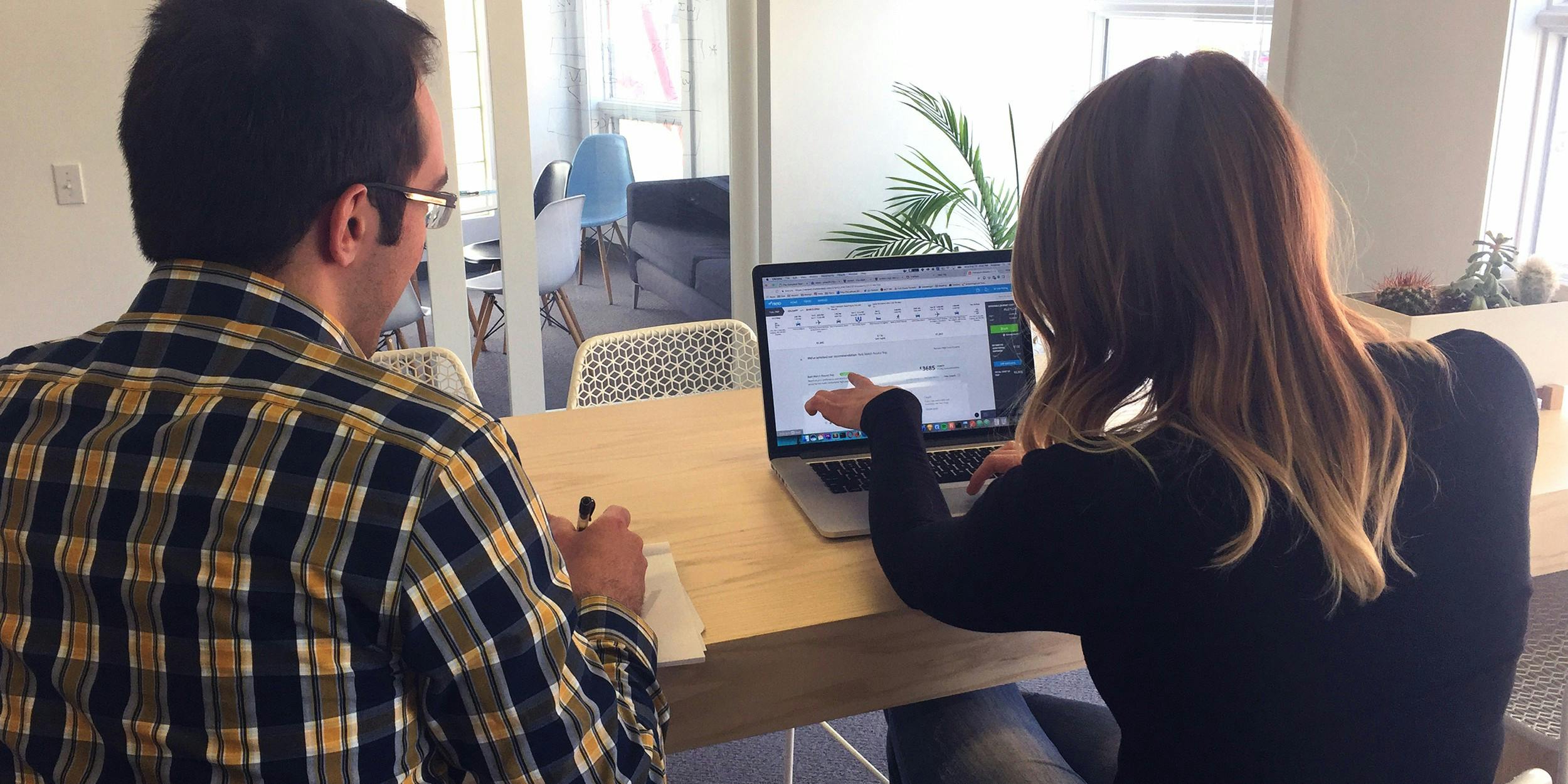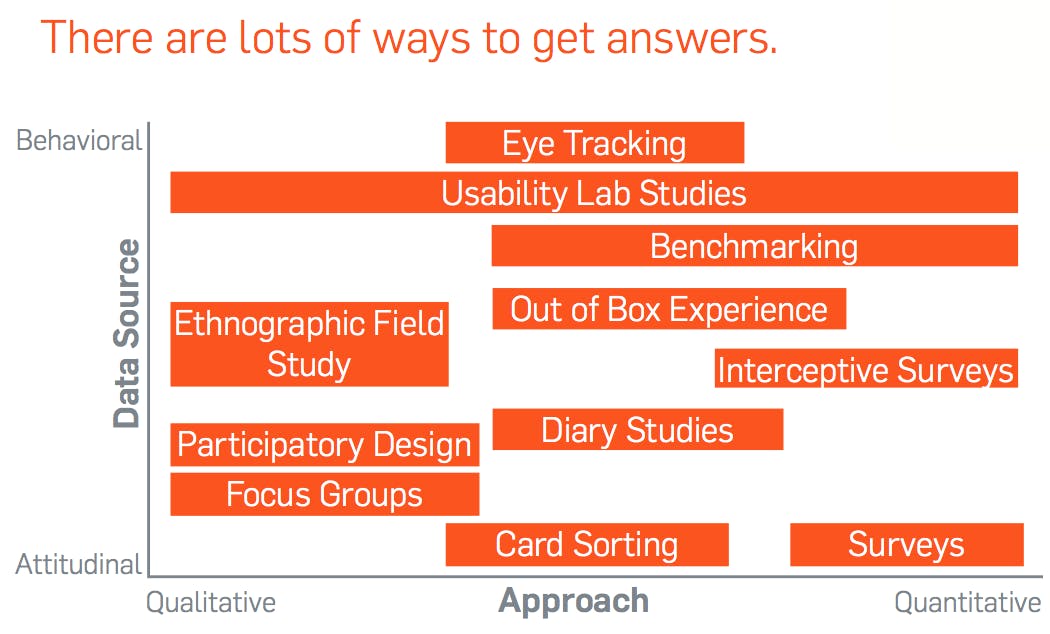Acquisition
UX Research is Invaluable for Building Great Products
No two people will hold the same biases, and that is why UX research is integral to designing great products that people love to use—not just products that we as designers love to use. To assume that you, as a product designer, will know exactly what the user wants is as naive as thinking the earth is flat simply because you can’t see the curve of the globe. At Versett, we understand how important it is to step outside of our preconceived assumptions about how a product should look and function, and look to the user for insight as to what will make that product shine.
Breaking down barriers
There are many common objections that product teams face when committing to research, including a lack of time, insufficient budget, and a lack of expertise. We believe that the right process can counter these objections, and because of this, we include UX research as a critical part of all our product design endeavours. The extent to which we conduct research and the methods employed are specific to each project, and the process can be modified to ensure resources are not wasted.
There is always time
When considering the time objection, we believe that a bit of extra time dedicated at the beginning of a project to really understand the needs of the user is far less of a burden than the potential time wasted when incorrect decisions are made as a result of internal biases or client assumptions. Once the initial research is conducted, and the product design team has a clear understanding of the problems they need to solve, incremental research to validate decisions or expose inaccuracies helps to keep the team focused.
It doesn’t have to break the budget
Research doesn't need to be expensive! Depending on the information you are looking to gather, it may not cost anything at all. The majority of research techniques that we use at Versett cost little more than a bit of time (see above) and the cost of incentives for participants. We recently incentivized a usability test by handing out $100 gift cards to each of the 5 participants. If $500 is too much for your budget, consider making a small donation to a charity on behalf of the participant. They can feel good helping out a worthy cause, and you feel good because you harvested all that useful information from their brains. Win-win!
We don’t need to be scientists
White lab coats are not required to conduct efficient research. Although UX research borrows from traditional lab testing, you don’t need to be a pro to get valuable information from participants. We are fortunate to have a few fantastic, highly educated researchers on staff who come with a tonne of experience. However, we still conducted some incredibly useful research before they came on board. Like anything in life, the more you practice, the better you get. Make it a priority to include research in your process, and you’ll be amazed at how quickly it becomes second nature.
Conducting the research
As mentioned, many different UX research methods can be employed throughout the timeline of a project. To properly apply each method, it’s essential to understand the individual characteristics of each technique. Shout out to the UEGroup for the informative graphic.
During the discovery phase
Generally speaking, the attitudinal research methods are more beneficial at the beginning of a project as they give insight into how users perceive the problems designers are trying to solve. Early on in a project, we conduct interviews and hold interactive sessions with clients and potential users where we execute card sorting and participatory design. These methods help to define the information hierarchy for a particular problem and can help to establish personas, which will help influence and back up design decisions. One beneficial method that isn’t on the matrix above, however, is market research. When we start a new project, we look for competitors and assess what they are doing and how that aligns (or doesn’t) with our assumptions of the problem. Depending on the product, there may be reviews and third party research already conducted that will help build up an excellent base of knowledge.
Throughout design and development
Once you have begun to sketch out wireframes, design screens, and build prototypes, it's beneficial to move towards more behavioural techniques. These methods will help you understand where your design falls short and what you are doing right. For the usability test mentioned above, we set up a streaming system using Youtube and Open Broadcast Software, which allowed us to view in real-time a video of the participant executing tasks as well as a visual of the device screen in the same viewport. By having one person guide the participant through the pre-determined tasks and another watching the test unfold in a different room, we were able to capture more data than if the facilitator had been observing alone. As a bonus, we can always go back and re-watch the video to see if we missed anything and share it with other members of the team who weren’t directly a part of the study to get their assessment.
Evaluating the results
Although we all have job descriptions at Versett, none of us is confined to tasks related to that description alone. One of the primary reasons we have such a capable team is that we all regularly take off our official hats and don a cap that is less worn in—we all become more well-rounded as we execute projects. Everyone on the team brings a unique perspective, and each is equally important in pulling valuable discoveries when we evaluate our research data.
We treat the evaluation stage of UX research as a team sport, and everyone is a player.
By including people from several disciplines, including product management, research, design, and development, we manage to avoid and overcome many of our existing biases. Product managers know the client inside out and will help to expose potential conflicts with the client’s culture. Developers understand the possible complications of coding out functionality and can provide alternatives to speed up development timelines and reduce complexity. Involving everyone in the evaluation phase of UX research allows them to fall in love with the problem, which inevitably leads to better results.
In addition to thoroughly evaluating the data from many different perspectives, involving team members across functions decreases the need for a long, heavy report summarizing the results. If numerous people are included in the evaluation stage, they will fully understand the results and be able to disseminate them to members of the team who weren’t directly involved. Let’s face it; nobody wants to read a 12-page report on how people book corporate travel. That isn’t to say that documenting the findings isn’t crucial. We use Quip to consolidate our notes from research and evaluation so that we can always go back and reference them for current and future projects.
Reaping the benefits
No matter which research methods you employ throughout your project, you are sure to gain valuable, relevant information that will help your team create a killer product. You might learn that your CTA text is confusing through usability tests, or less effective than it could be by using Google Trends. A card sorting exercise early on in the project lifecycle might assist in creating a sitemap for a gigantic website, or help you understand the client’s emotional context surrounding their product during a branding endeavour.
When you have the data, insights virtually discover themselves.
Circling back once more to our most recent usability test, we learned that the users were expecting to be able to filter search results, which was something that the design team never considered for that particular product. The test also exposed a few areas of the site that were less obvious to the user but held incredibly valuable information. Once we had synthesized the data we gained during our research, we handed off a couple of deliverables to the client. We wrote a succinct report with our fundamental discoveries and prepared a short video with highlights from the streamed usability testing. Presenting the data to the client helped us in backing up a few modifications to the design. There wasn’t any pushback because they were able to see the results of the testing themselves.
It may be difficult at first to prioritize UX research when you have a tight deadline or a small budget. The benefits of setting aside some time to learn about a problem in-depth almost always outweigh the costs. Ideas or concerns you initially thought were irrelevant may suddenly become relevant when you step outside of your comfort zone and commit to learning as much as you can about a problem.


